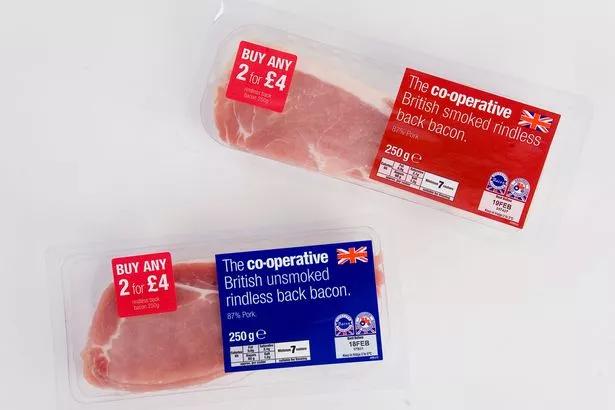When it comes to bacon, there are two main types: smoked and unsmoked. While both varieties are delicious, they do have distinct differences in flavor, texture, and preparation methods. In this article, we will explore the characteristics of smoked and unsmoked bacon and help you understand the key factors that set them apart.
Smoked Bacon
Smoked bacon is bacon that has been cured and then exposed to smoke. The smoking process imparts a rich, smoky flavor to the bacon, giving it a distinct taste that many people love. The smoke is typically created by burning wood chips or sawdust, which adds depth and complexity to the bacon's flavor profile.
Smoked bacon is often seen as more flavorful and robust compared to unsmoked bacon. The smokiness adds a savory element that enhances the overall taste experience. It pairs well with a variety of dishes and can be used as a key ingredient in recipes that call for a smoky flavor.
Unsmoked Bacon
Unsmoked bacon, also known as green bacon or fresh bacon, is bacon that has been cured but not exposed to smoke. It has a milder, more delicate flavor compared to smoked bacon. Unsmoked bacon is typically cured with a combination of salt, sugar, and other seasonings to enhance its taste.
Unsmoked bacon is often preferred by those who enjoy a more subtle bacon flavor. Its natural sweetness and saltiness shine through, making it a versatile ingredient in various dishes. Unsmoked bacon is commonly used in sandwiches, salads, and pasta dishes, where its flavors can complement other ingredients without overpowering them.

Differences in Preparation
The preparation methods for smoked and unsmoked bacon also differ. Smoked bacon is ready to eat straight out of the package, as the smoking process cooks and preserves the meat. It can be fried, baked, or grilled to achieve the desired crispness.
On the other hand, unsmoked bacon needs to be cooked thoroughly before consumption. It can be pan-fried, grilled, or oven-baked to achieve a crispy texture. Unsmoked bacon is often used in recipes that require the bacon to be cooked until crispy, such as in breakfast dishes or as a topping for burgers.
Frequently Asked Questions
Can smoked bacon be used in recipes that call for unsmoked bacon?
Yes, smoked bacon can be used as a substitute for unsmoked bacon in recipes. However, keep in mind that the smoky flavor of the bacon may alter the overall taste of the dish. Adjust the seasoning accordingly to balance the flavors.

Which type of bacon is healthier?
Both smoked and unsmoked bacon have similar nutritional values. However, smoked bacon may contain slightly higher levels of sodium due to the curing and smoking process. It is important to consume bacon in moderation as part of a balanced diet.
Can unsmoked bacon be smoked at home?
Yes, unsmoked bacon can be smoked at home using a smoker or stovetop smoking method. This allows you to customize the level of smokiness to suit your preference.
In conclusion, the main difference between smoked and unsmoked bacon lies in the flavor and preparation methods. Smoked bacon offers a rich, smoky taste while unsmoked bacon has a milder, more delicate flavor. Both varieties have their own unique characteristics and can be used in a wide range of dishes. Whether you prefer the boldness of smoked bacon or the subtlety of unsmoked bacon, bacon lovers can enjoy the versatility and deliciousness that bacon brings to the table.
If you want to know other articles similar to Difference between smoked & unsmoked bacon: exploring flavor & preparation you can visit the Bacon category.


Related Articles